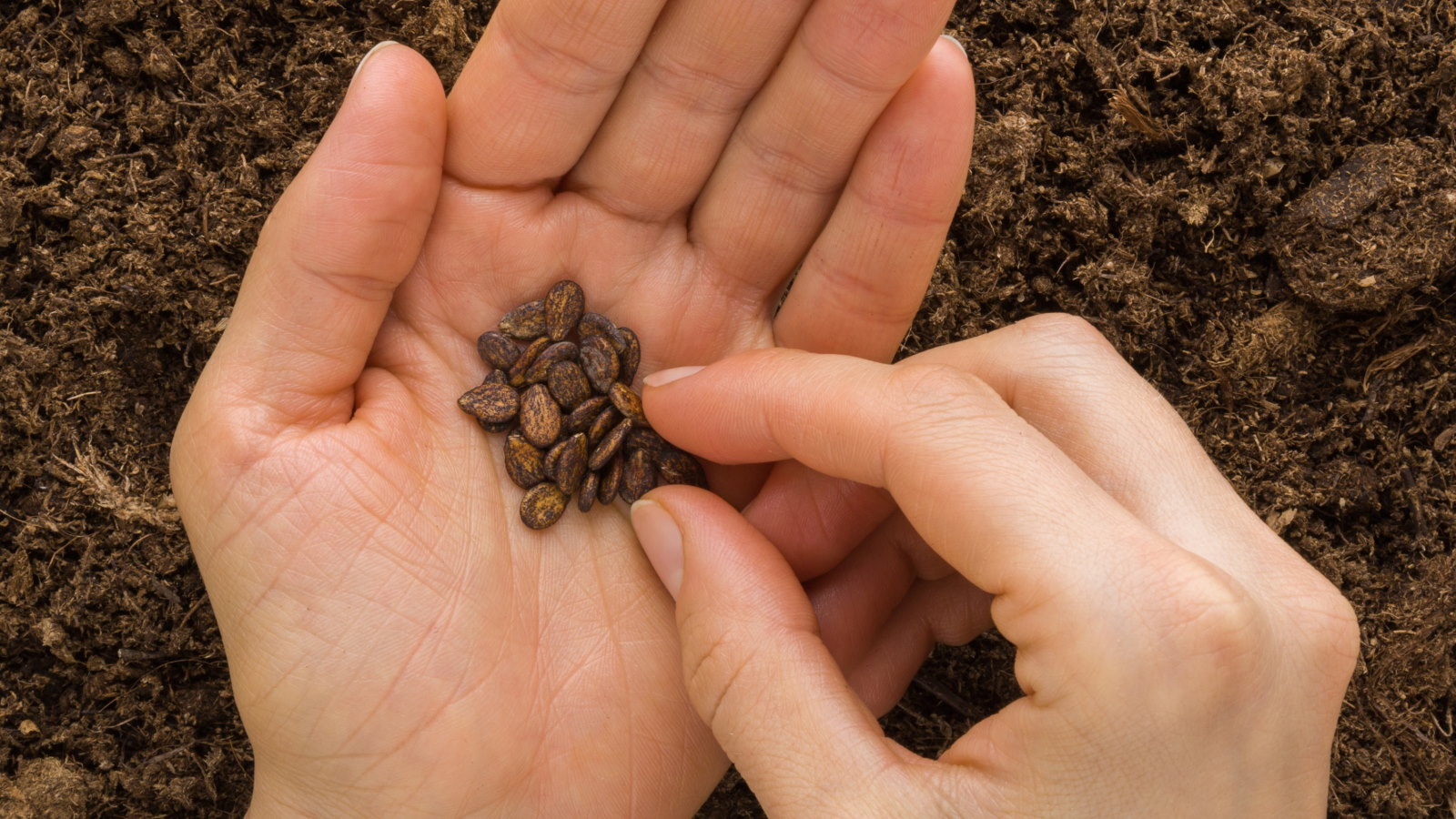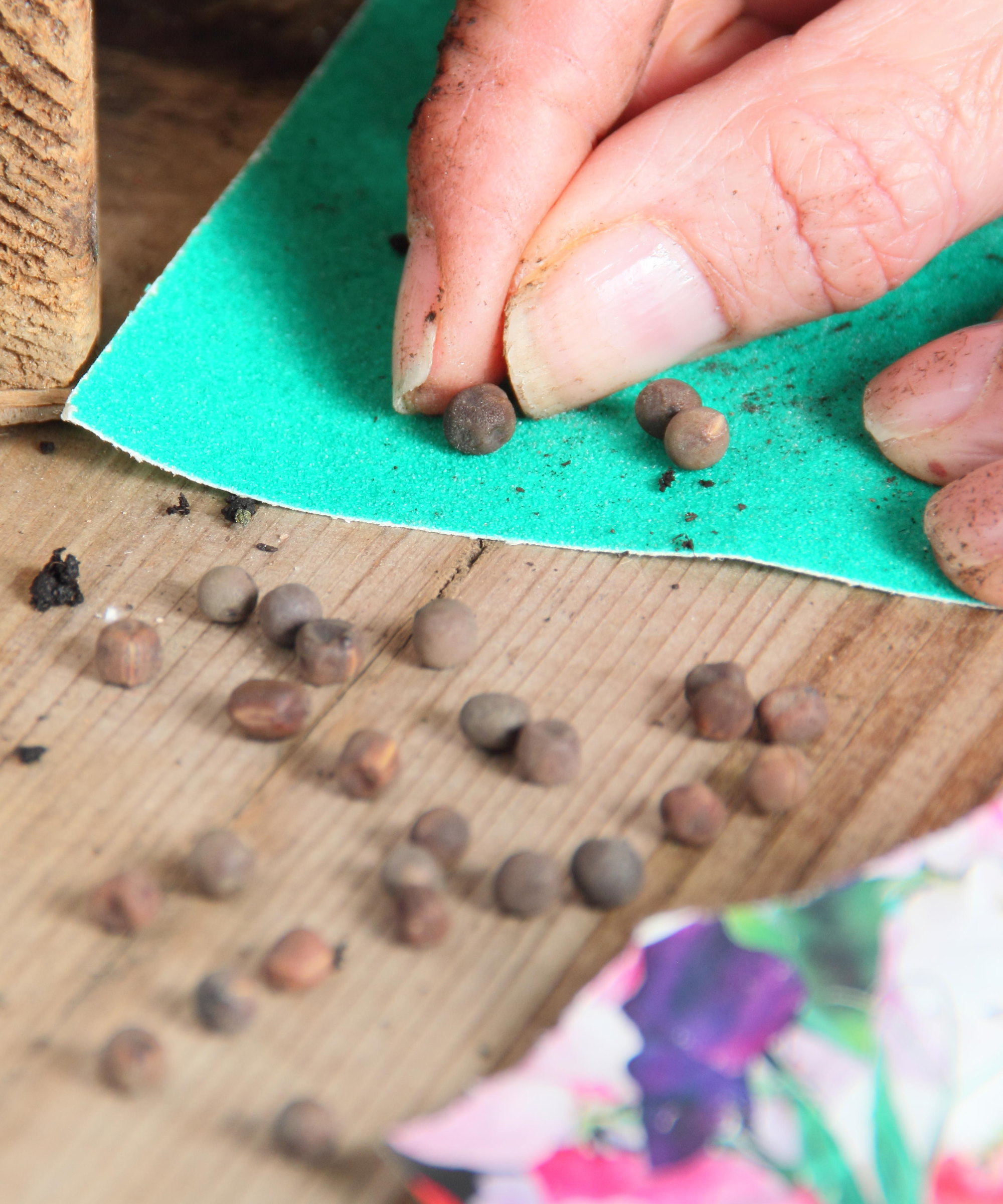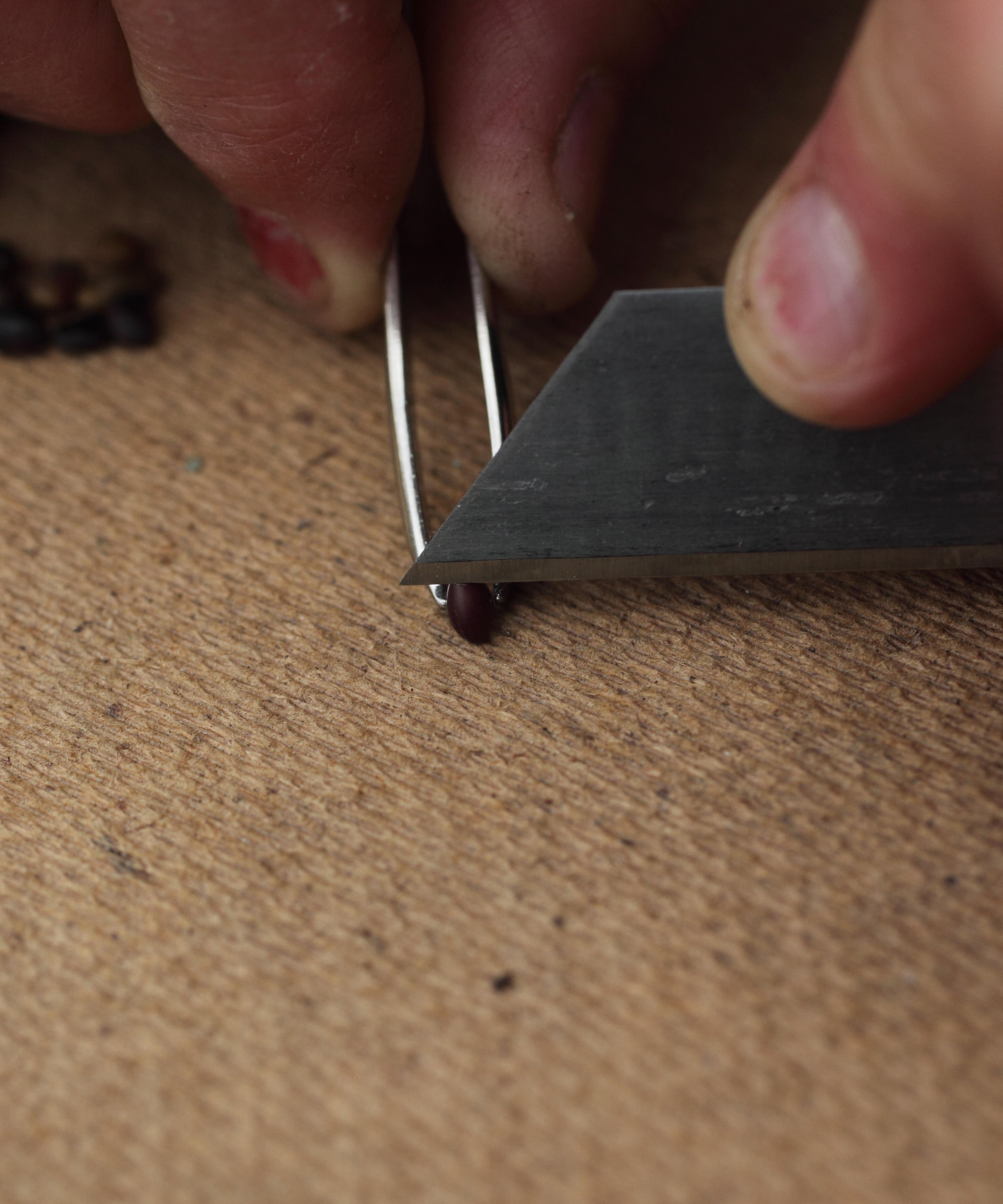
Scarifying, stratifying, and soaking - several pre-germination techniques can help boost your success when sowing seeds. Scarifying or nicking seeds is a proven way to improve germination rates, but how should you do it and what plants will benefit from the technique?
Nicking seeds is a simple process that involves making a small cut in the seed’s waterproof coating. It is useful for seeds with tough, impermeable hulls as it allows water into the interior and kick-starts germination.
The seeds can germinate without being nicked but take longer. So we look at how to scarify seeds and reveal some of the plants you should nick to germinate seeds quicker and more efficiently.

How to nick seeds before planting
Stratifying seeds mimics natural cold cycles and soaking seeds before planting replicates seasonal conditions. Not all seeds need these treatments, but it is beneficial to do it for those that do.
In the same way, not all seeds need chipping though taking time to scarify seeds that do benefit will improve your germination.
When it comes to how to scarify seeds, they need a small, careful nick courtesy of a sharp knife or nail clipper. Take care to only make a shallow opening, large enough for water to penetrate but not deep enough to damage the internal embryo. The outer shell needs only a tiny nick for moisture to penetrate.
For example, when using nail clippers use only the corner of them to cut only the seed coating and not any deeper - which risks harming the growing tissue inside.
There are alternative seed scarification techniques if you don’t want to use a knife or clippers. The seed coating can be damaged using sandpaper or a file to the same effect. Drag the seed along the surface of a metal file, or rub on the sandpaper, gently until you see inside the seed coating.
Larger seeds, like melons or luffa gourds, can even be snipped with scissors to take a tiny bit off at the end of the seed.
If your seeds also require soaking, it is best to nick them first and then soak them in water as you prepare for seed sowing. Plant the seeds quickly after being nicked, as you cannot store seeds once their coating has been damaged.
7 seeds to nick before planting

- Watermelons - When you grow watermelons and melons, including winter melons or honeydew melons, they grow from large seeds that have a tough coating. This hard outer layer makes it difficult for water to penetrate. Nicking these tough seeds or clipping off a tiny bit of the rounded end of the seed speeds up germination rates when you plant watermelon.
- Luffa - If you want to grow luffa for a homegrown, natural sponge, scarifying and soaking seeds will help germination. Janice Cox, author of Beautiful Luffa, says she gives seeds ‘a little knick on the rounded end’ with nail clippers ahead of planting. As luffas are notoriously tricky to germinate and have a long growing season, any way to speed up the germination process is very helpful.
- Morning glory - The fast-growing flowering vines take months from sowing to blooming, so speeding up the process is recommended. When you grow morning glory from seed, nick the hard coating with a file or sandpaper before soaking the seeds overnight. Then sow the seeds indoors into trays or pots in early spring.
- Sweet peas - These beautiful and highly-scented flowers are adored in cottage gardens and flower beds. The seeds of any sweet pea varieties can germinate quicker after being nicked with a nail clipper and soaked overnight before planting. Nicking is not a prerequisite for planting sweet pea seeds, but it will break the hard outer coat and speed things up.
- Canna lily - Many people grow canna lilies by planting bulbs, but you can also grow these tropical plants from seed. One issue to overcome when growing from seed is their extremely hard exterior - the plants are known as ‘Indian Shot’ due to their similarity to shotgun pellets. Making a small nick on the surface or filing down the seed coating is important before sowing seeds so they can absorb moisture and germinate.
- Okra - Grow okra by sowing seeds indoors in early spring, or planting directly outdoors after the last frosts. The seeds benefit from soaking before sowing, but nicking the hard seeds will speed up the germination. Nick the seed opposite to where the pod was attached to the ovary wall. With okra seeds, it means nicking the seed opposite to the little eye.
- Lupines - Seeds are not the usual way to propagate lupines as they don’t come true to color and it is a gamble what blooms you will get. But if you want bright spires of summer color, growing plants from seed is a budget-friendly way to get flowers. To aid success, scarify lupine seeds by rubbing them on a file or sandpaper to break the seed coating before soaking them for 24 hours before planting.
Shop tools to scarify seeds with
A pack of 60 and 80 grit sandpaper sheets to use when you scarify seeds to break through the outer coating.
A compact multi-grade filing tool with flat mill, half-round second-cut, flat wood rasp and half-round wood rasp.
A pair of easy-to-use handle clippers made from high-quality stainless steel and with extra sharp blades and jaws.
There are some crops where it is more optional whether you choose to scarify seeds or not.
For example, some gardeners nick the seeds when growing pumpkins and others scarify seeds ahead of planting beans. There may be benefits of nicking seeds with these two plants, however, I have never found them to be particularly slow when sown at the right time and germinated somewhere warm, such as in a greenhouse or on a warm windowsill.







